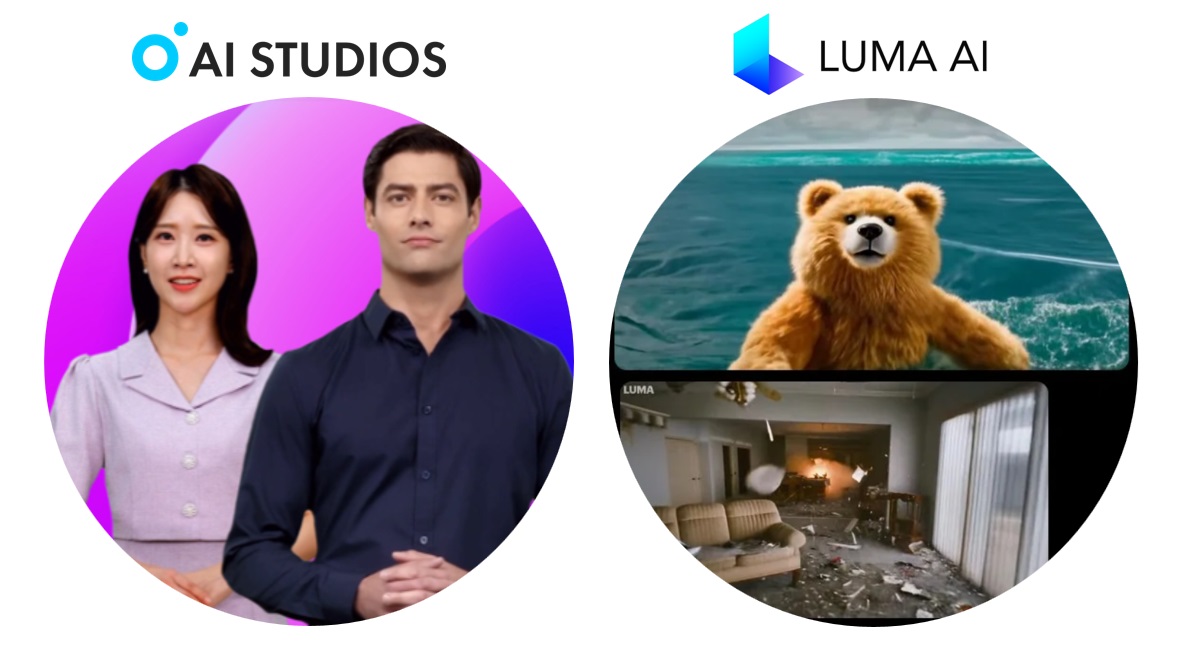In the rapidly evolving world of AI, Luma AI stands out as a transformative tool for content creators, enabling the creation of stunning 3D assets and videos from simple 2D inputs. This blog post dives into what makes Luma AI a game-changer, its features, and how it is set to redefine digital content creation.
Luma AI is a cutting-edge platform designed to convert 2D images into detailed 3D models and videos. Leveraging advanced neural rendering techniques, Luma AI enables users to create realistic 3D assets with ease. This technology is particularly beneficial for industries such as gaming, film, architecture, and virtual reality, where high-quality 3D models are crucial.
Luma AI’s core feature is its ability to generate photorealistic 3D models from standard 2D photos. By capturing multiple angles of an object using a smartphone, users can upload these images to Luma AI, which then processes them into a cohesive 3D model. This model can be viewed and manipulated from any angle, providing an immersive experience that traditional 2D images cannot offer.
One of the standout aspects of Luma AI is its user-friendly interface. Even those with limited technical expertise can navigate the platform and create complex 3D models. The process is straightforward: upload images, wait for the AI to process them, and then download the 3D model. This simplicity makes Luma AI accessible to a broad audience, from hobbyists to professional designers.
Luma AI supports integration with various other digital tools and platforms, enhancing its functionality and versatility. For instance, users can export their 3D models to popular design software or share them on social media. This capability ensures that the models created can be easily incorporated into broader projects or showcased to a wider audience.
The backbone of Luma AI is its advanced neural rendering technology. This system uses deep learning algorithms to analyze and reconstruct images with remarkable accuracy. The result is a level of detail and realism that sets Luma AI apart from other 3D modeling tools. This technology is continually improving, promising even more realistic and intricate models in the future.

Using Luma AI is a straightforward process:
Luma AI's new "Loops" feature is a game-changer for AI video creation. It allows users to generate seamless, continuous video loops from text descriptions, images, or keyframes. This solves a major problem: choppy or disjointed AI-generated videos.
Key benefits of Loops:
Potential applications:
Luma AI's competitive advantage:
Overall, Luma AI's Loops feature is a significant step forward for AI-generated media. It allows for seamless, engaging content creation with the potential to revolutionize various fields.
The potential applications of Luma AI are vast and varied:
Luma AI is revolutionizing the way we create and interact with digital content. Its ability to turn simple 2D images into detailed 3D models opens up new possibilities for creativity and innovation. Whether you're a professional designer or a hobbyist, Luma AI provides a powerful, easy-to-use tool to bring your ideas to life.
As AI technology continues to advance, tools like Luma AI will become increasingly integral to digital content creation. By making high-quality 3D modeling accessible to everyone, Luma AI is paving the way for a new era of digital creativity.
For more detailed information, you can visit the official Luma AI blog.
Integrating Luma AI’s advanced 3D modeling capabilities with AI Studios’ sophisticated AI-driven video creation tools opens up a world of creative possibilities. Here’s how combining these two powerful platforms can be leveraged to produce innovative and high-quality digital artworks.

Luma AI excels in converting 2D images into highly detailed 3D models. These models can serve as the foundation for creating immersive environments and characters. For instance, an artist can take photographs of real-world objects and scenes, and use Luma AI to generate 3D assets that can be seamlessly integrated into a digital project.
DeepBrain AI Studios offers robust tools for creating lifelike animations and virtual characters. By importing 3D models from Luma AI, users can animate these models with realistic movements and interactions. DeepBrain’s AI-driven technology allows for the creation of nuanced character expressions and behaviors, adding depth to the animations.
In the realm of digital marketing, the combination of Luma AI and DeepBrain AI Studios can be used to produce captivating and interactive advertisements. Marketers can create realistic 3D models of their products and animate them in compelling ways to showcase their features and benefits.
Virtual reality (VR) is another area where the integration of these technologies shines. Luma AI’s detailed 3D models can be used to build rich virtual environments. DeepBrain AI Studios can then bring these environments to life with dynamic animations and interactive elements, creating fully immersive VR experiences.
The combined power of Luma AI and DeepBrain AI Studios also lends itself to innovative storytelling formats. By creating interactive 3D scenes and characters, storytellers can craft narratives that allow the audience to engage and interact with the story in real-time.
The synergy between Luma AI’s cutting-edge 3D modeling technology and DeepBrain AI Studios' advanced animation and video production tools offers a new frontier for digital content creation. Whether in film, education, marketing, gaming, or storytelling, the combined capabilities of these platforms empower creators to produce innovative, immersive, and engaging digital artworks. As these technologies continue to evolve, the scope and quality of what can be created will only expand, pushing the boundaries of digital creativity and innovation.